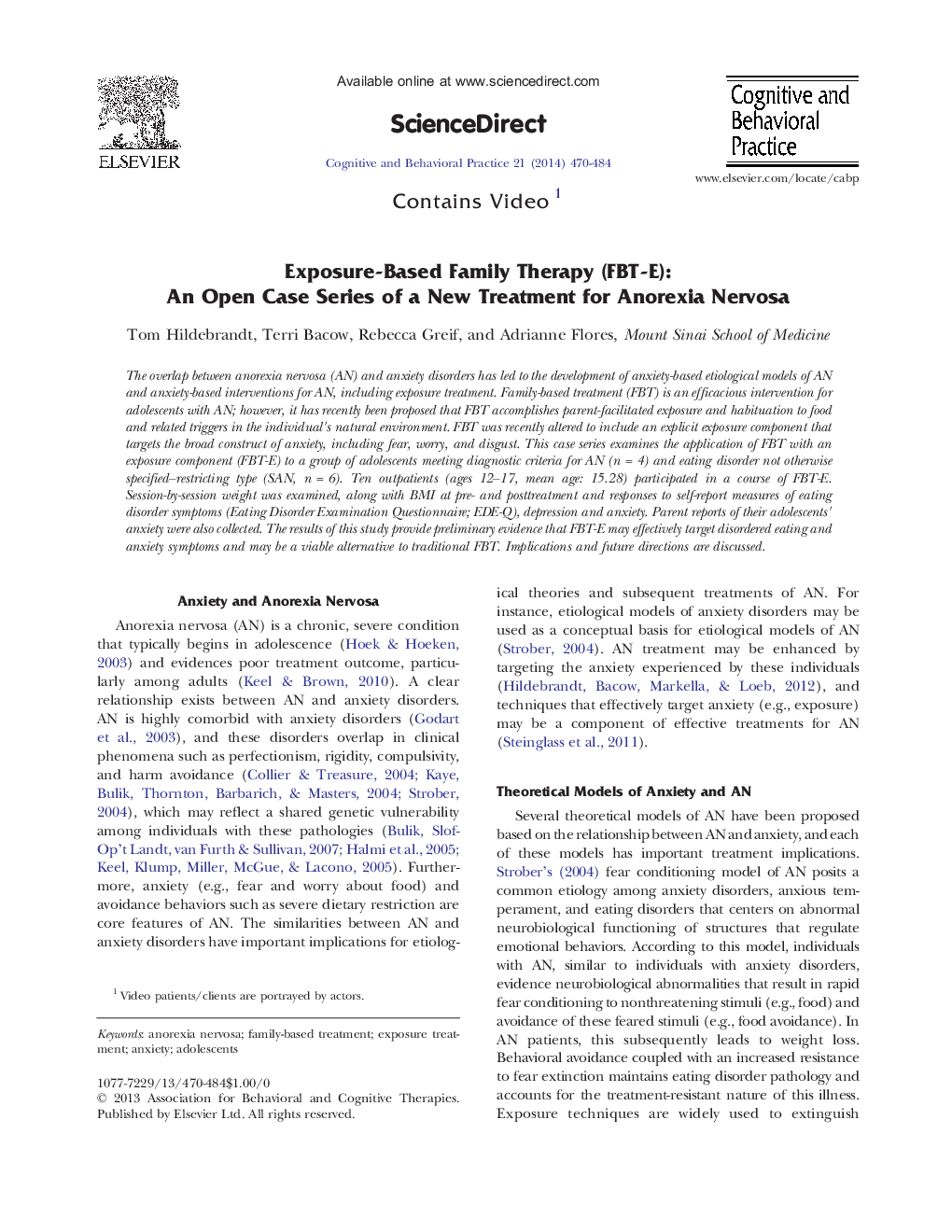| کد مقاله | کد نشریه | سال انتشار | مقاله انگلیسی | نسخه تمام متن |
|---|---|---|---|---|
| 904278 | 916818 | 2014 | 15 صفحه PDF | دانلود رایگان |
اضطراب و آنورکسی
مدلهای نظری اضطراب و آنورکسی
شکل 1 مدل یکپارچه اضطراب را خلاصه میکند.
مستلزمات درمانی برای مدل اضطراب جامع
بالینی
سنجشها
سنجش نوجوانان
جدول 1. مقایسه مولفههای درمانی FBT و FBT-E
سنجش والدین
رویکرد FBT-E
مرحله 1: بازیابی از یک بیماری
مرحله 2: بازگشت به بازی
جدول2 ماژولهای درمان اختیاری مرحله دوم FBT-E
شکل2. وزن ایده آل پیش از درمان به واسطه پس از درمان
جدول3. افسردگی نوجوان، اختلال در خوردن و علایم اضطراب
نتایج
تحلیل آماری
اثرات درمان
بحث
محدودیتها
دستورالعملهای بیشتر
• We conducted an open trial of an exposure-based version of FBT (FBT-E)
• We examined treatment effect on eating disorder and anxiety symptoms
• Preliminary results indicate FBT-E effectively reduces eating disorder and anxiety
• symptoms
• FBT-E may be a viable alternative to traditional FBT
The overlap between anorexia nervosa (AN) and anxiety disorders has led to the development of anxiety-based etiological models of AN and anxiety-based interventions for AN, including exposure treatment. Family-based treatment (FBT) is an efficacious intervention for adolescents with AN; however, it has recently been proposed that FBT accomplishes parent-facilitated exposure and habituation to food and related triggers in the individual's natural environment. FBT was recently altered to include an explicit exposure component that targets the broad construct of anxiety, including fear, worry, and disgust. This case series examines the application of FBT with an exposure component (FBT-E) to a group of adolescents meeting diagnostic criteria for AN (n = 4) and eating disorder not otherwise specified–restricting type (SAN, n = 6). Ten outpatients (ages 12–17, mean age: 15.28) participated in a course of FBT-E. Session-by-session weight was examined, along with BMI at pre- and posttreatment and responses to self-report measures of eating disorder symptoms (Eating Disorder Examination Questionnaire; EDE-Q), depression and anxiety. Parent reports of their adolescents' anxiety were also collected. The results of this study provide preliminary evidence that FBT-E may effectively target disordered eating and anxiety symptoms and may be a viable alternative to traditional FBT. Implications and future directions are discussed.
Journal: Cognitive and Behavioral Practice - Volume 21, Issue 4, November 2014, Pages 470–484
